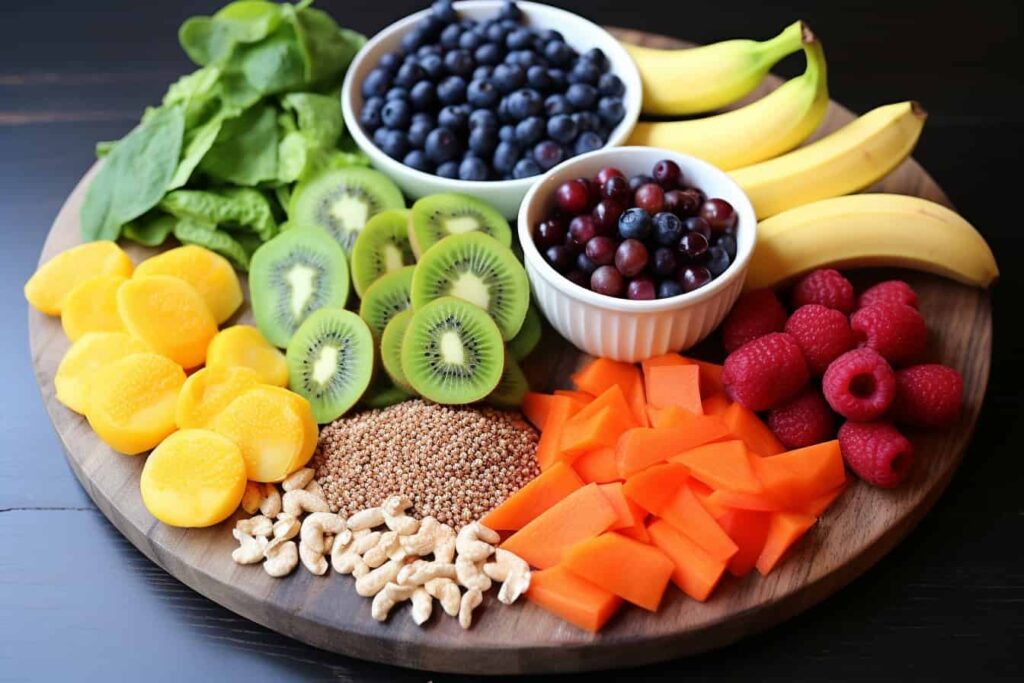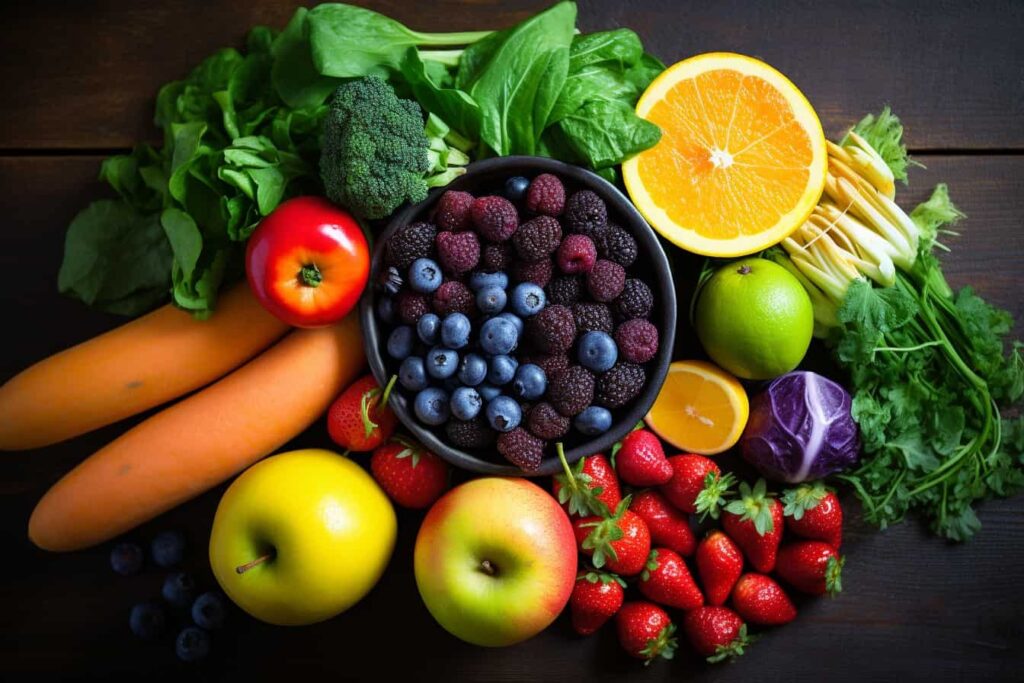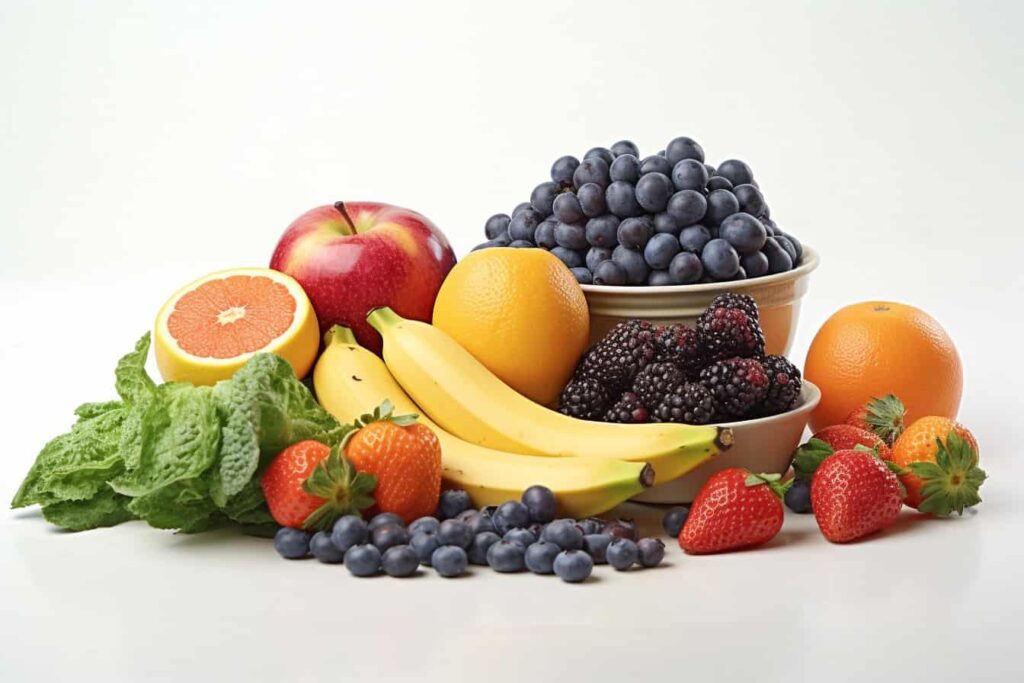Irritable Bowel Syndrome (IBS) is a condition that affects millions worldwide, causing discomfort, pain, and a host of digestive symptoms. For many, finding a solution can be a long and challenging journey.
Enter the low FODMAP diet – a often recommended dietary approach that has shown promise in alleviating IBS symptoms for many sufferers. But what exactly is this diet, and how can it make a difference?
In this comprehensive guide, we’ll delve deep into the world of FODMAPs, exploring their connection to IBS, the foods you should embrace and avoid, and the transformative potential of this diet.
Whether you’re an IBS sufferer or a curious reader, this article aims to provide you with everything you need to know about the low FODMAP diet.
- Read more about IBS and Diet Plans

Understanding FODMAPs and Their Role in Digestion
When you start properly managing your IBS, you’re going to come across the term FODMAP a lot. And it can be confusing.
FODMAP is an acronym that stands for Fermentable Oligosaccharides, Disaccharides, Monosaccharides, and Polyols.
These might sound like complex scientific terms, but in simpler words, they refer to a group of carbohydrates that are sometimes poorly absorbed in the small intestine.
When these carbohydrates aren’t absorbed, they travel to the large intestine, where they become food for the gut bacteria. This fermentation process produces gas, leading to the bloating, pain, and other symptoms commonly associated with IBS.
Let’s break down the components of FODMAPs:
- Oligosaccharides: Found in foods like wheat, rye, legumes, and certain vegetables such as garlic and onions.
- Disaccharides (Lactose): Present in dairy products like milk, yogurt, and soft cheeses.
- Monosaccharides (Fructose): Found in fruits like apples, pears, and honey, as well as high-fructose corn syrups.
- Polyols: These are sugar alcohols found in certain fruits and vegetables, including blackberries, lychee, and avocados, as well as in some sweeteners like sorbitol and mannitol.
For individuals with IBS, consuming high amounts of these carbohydrates can exacerbate symptoms. The low FODMAP diet, therefore, focuses on limiting these foods to manage and reduce these symptoms.

Starting a Low FODMAP Diet: A Three-Stage Approach
Successfully implementing the low FODMAP diet involves more than just identifying and avoiding certain foods. It’s a structured process that can be broken down into three distinct stages:
Stage 1 – Elimination
- Duration: Typically 3-8 weeks.
- Purpose: This is the initial phase where all high FODMAP foods are removed from the diet. The goal is to achieve significant symptom relief by the end of this period.
- Key Point: It’s essential to be strict during this phase to accurately assess the impact of the diet on your symptoms.
If after 8 weeks you’re still struggling, speak to a healthcare professional.
Before starting the elimination process, you should always discuss it with a nutritionist or doctor to ensure the diet is right for you.
Stage 2 – Reintroduction
Once you’ve seen an improvement in IBS symptoms over the course of the elimination stage, it’s time to begin reintroducing foods.
- Duration: Varies depending on the individual, but can range from 3-12 weeks.
- Purpose: In this phase, you’ll gradually reintroduce high FODMAP foods one at a time, monitoring for any symptom recurrence. This helps identify specific FODMAPs that trigger your symptoms.
- Key Point: It’s crucial to reintroduce foods methodically, allowing enough time between each to accurately gauge reactions.
Every 3 to 7 days, a new food should be added back to the diet, with careful monitoring of the symptoms. This is best done under the guidance of a nutritionist.
Stage 3 – Personalization
At the third stage, FODMAPs will still be restricted, but you can better understand which ones trigger a reaction. This is also known as the maintenance phase.
- Duration: Ongoing.
- Purpose: Once you’ve identified your triggers, you can personalize your diet. This means avoiding or limiting only those FODMAPs that cause symptoms while enjoying a broader range of foods.
- Key Point: This phase is about balance. It’s essential to find a diet that manages your symptoms while ensuring you get the necessary nutrients for overall health.
The diet will be close to normal, only lacking the high FODMAP foods that triggered symptoms in the reintroduction phase. Over time, the diet may need to change again.
Remember, everyone’s body is different. While the low FODMAP diet can be transformative for many, it’s essential to approach it with patience and, preferably, under the guidance of a healthcare professional or nutritionist.
Understanding which foods are high or low in FODMAPs is crucial for successfully navigating the diet. Let’s take a look at these breakdowns to guide your food choices.
What Foods are High in FODMAPs?
Note: It’s recommended to avoid these during the elimination phase.
High FODMAP foods to avoid eating are:
- Fruits: Apples, watermelon, blackberries, peaches, prunes, pears, and dried fruits.
- Vegetables: Artichokes, asparagus, cauliflower, garlic, onions, snow peas, and brussels sprouts.
- Grains and Starches: Wheat, barley, rye, cereals, pasta, and pizza.
- Dairy: Cow’s milk, ice cream, yogurt, and soft cheese.
- Nuts and Fats: Cashews, pistachios, and avocados
- Sweeteners: Agave nectar, honey, high fructose corn syrup, xylitol, sorbitol.
- Legumes: Beans and lentils.
- Meats: Sausages, and battered or breaded meats and fishes.
Learn more about IBS Fruit Guidelines.
What Foods are Low in FODMAPs?

Note: Safe to consume during the elimination phase.
Low FODMAP foods to construct a diet around include:
- Fruits: Bananas, blueberries, kiwi, lime, oranges, strawberries, grapes, and pineapple.
- Vegetables: Bean sprouts, bell peppers, carrots, cucumbers, chives, eggplant, tomato, zucchini, spinach, and kale.
- Grains and Starches: Rice, quinoa, oat, potato, and look for gluten-free breads and pastas.
- Dairy Alternatives: Feta, brie, almond milk, rice milk, and soy milk.
- Proteins: Tuna, chicken, beef, salmon, shrimp, eggs, and tofu.
- Nuts and Fats: peanuts, macadamia nuts, pumpkin seeds, pine nuts, walnuts, and almonds (limit to no more than 15 at a time).
- Sweeteners: Maple syrup, table sugar, and stevia.
Gluten isn’t a FODMAP, but gluten-free foods do tend to be low in FODMAPs. A gluten-free diet for IBS is a popular diet approach too.
While this list provides a general guideline, it’s essential to remember that individual reactions to FODMAPs can vary. Keeping a food diary during the elimination and reintroduction phases can be invaluable in tracking your responses and personalizing your diet.
Additionally, FODMAP content in foods can change based on factors like ripeness or preparation methods. For a more comprehensive list and to stay updated on the latest research, consider using dedicated FODMAP apps or consulting with a nutritionist.
Be sure to check the ingredients list on products before you buy. FODMAPs are often used as additives, and may appear in some surprising places.
The Science Behind the Low FODMAP Diet for IBS
The low FODMAP diet isn’t just another dietary trend; it’s backed by extensive scientific research, particularly for its benefits to manage the symptoms of IBS. Here’s a closer look at what the studies say:
- Symptom Reduction: In a 2014 study, a low FODMAP diet was shown to reduce bloating, pain, and passage of gas. Patients using the low FODMAP diet also felt stool consistency was improved. The evidence suggested that a low FODMAP diet was a good initial treatment for IBS.
- Improved Quality of Life: Up to 86% of patients in a 2016 report found that following a low FODMAP diet could effectively reduce symptoms of IBS with an overall improvement in their quality of life. This includes better sleep, increased energy levels, and reduced anxiety related to food choices. The range of IBS related symptoms relieved includes, pain, flatulence, diarrhea, and constipation.
- Gut Health: Preliminary research suggests that the low FODMAP diet may have a positive impact on the gut microbiome, promoting the growth of beneficial bacteria.
- Personalized Approach: One of the standout benefits of the low FODMAP diet is its emphasis on personalization. The reintroduction phase allows individuals to pinpoint specific triggers, leading to a more tailored and sustainable long-term diet.
- Endorsement by Health Professionals: Many gastroenterologists and nutritionists now recommend the low FODMAP diet as a first-line treatment for IBS, further underscoring its credibility.
A 2017 study also felt that a low FODMAP diet was beneficial to the majority of those suffering with IBS. Another 2017 report found similar results.
Research into a low FODMAP diet as a treatment for IBS is strongly supportive. Adopting a low FODMAP diet can be beneficial for a range of symptoms commonly associated with IBS.
By carefully controlling intake, a person can find a diet best suited to their own condition.
While the benefits are promising, it’s essential to approach the diet with a balanced perspective. Not everyone with IBS will respond to the diet in the same way, and some may find relief through other dietary or medical interventions. Always consult with a healthcare professional before making significant dietary changes.

Should You Try a Low FODMAP Diet?
If you’re considering the low FODMAP diet, it’s essential to approach it with a well-informed perspective.
Here are some key recommendations and considerations to keep in mind:
- Seek Expert Guidance: Before starting the diet, consult with a gastroenterologist or a registered dietitian who is familiar with FODMAPs. They can provide personalized advice, monitor your progress, and ensure you’re getting the necessary nutrients.
- Keep a Food Diary: Tracking what you eat and noting any symptoms can be invaluable. It helps identify specific triggers and assess the diet’s effectiveness for you.
- Stay Updated: FODMAP research is ongoing, and food classifications can change. Stay informed by using dedicated FODMAP apps or regularly consulting updated food lists.
- Mind Your Mental Well-being: Dietary changes can be challenging. If you feel overwhelmed or anxious, consider seeking support from a therapist or counselor who can provide coping strategies.
- Reintroduction is Crucial: The elimination phase is temporary. The goal is to reintroduce foods to determine your triggers and enjoy a varied diet in the long run.
- It’s Not One-Size-Fits-All: Everyone’s body is different. While many find relief with the low FODMAP diet, it may not work for everyone. Listen to your body and be open to exploring other dietary or medical interventions if needed.
- Balanced Diet: While the focus is on FODMAPs, ensure you maintain a balanced diet. This means getting a mix of proteins, fats, and other essential nutrients, even while eliminating certain foods.
Remember, the low FODMAP diet is a tool to help manage IBS symptoms. It’s not a lifetime restriction but a pathway to understanding your body better and enjoying a symptom-free life.
A low FODMAP diet should only be used by those with IBS who are looking for a way to better control their symptoms. Due to the significant restrictions, those without IBS should not attempt a low FODMAP diet.
If you’ve found your IBS isn’t responding to other treatments and dietary changes, then a low FODMAP diet may be the next step.
Always speak with a doctor or nutritionist before attempting the elimination and reintroduction stages. Low FODMAP diets require preparation and research. If you intend to start, you have to be committed, or you won’t be able to feel the beneficial effects.
Potential Risks and Criticisms
While the low FODMAP diet has garnered praise for its effectiveness in managing IBS symptoms, it’s essential to be aware of potential risks and criticisms:
- Nutritional Deficiencies: Restricting various food groups can lead to potential nutrient deficiencies, especially if not followed correctly. For instance, eliminating dairy can reduce calcium intake, and avoiding certain grains can decrease fiber consumption.
- Complexity and Restrictiveness: The diet can be challenging to follow, especially during the elimination phase. This restrictiveness can be daunting for some individuals and might lead to feelings of deprivation.
- Impact on Gut Microbiota: Some studies suggest that the low FODMAP diet might reduce the abundance of beneficial gut bacteria. However, this effect seems to be temporary and can be mitigated by reintroducing high FODMAP foods over time.
- Not a One-Size-Fits-All Solution: While many individuals benefit from the diet, it doesn’t work for everyone. Some people might not notice any significant symptom relief.
- Potential for Over-Restriction: There’s a risk that individuals might continue to avoid high FODMAP foods even after the elimination phase, leading to an unnecessarily restrictive diet.
It’s crucial to approach the low FODMAP diet with a balanced perspective, understanding both its potential benefits and limitations. Consulting with a healthcare professional can help navigate these concerns and ensure a safe and effective dietary journey.

The Transformative Potential of the Low FODMAP Diet
Living with Irritable Bowel Syndrome can be a daily challenge, with symptoms often impacting every facet of life. The low FODMAP diet emerges as a beacon of hope for many, offering a scientifically-backed approach to symptom management and improved quality of life.
While the diet requires dedication, patience, and a willingness to understand one’s body, the potential rewards are significant. From reduced bloating and pain to a renewed sense of dietary freedom, the benefits can be transformative.
However, it’s essential to remember that the journey is personal. What works for one individual might differ for another. The key is to approach the diet with an open mind, armed with knowledge and the support of healthcare professionals.
Here are other Low FODMAP and food related articles:
- List of Foods to Avoid Eating During an IBS Flare-Up
- IBS Snacks
- Cooked Vegetables and IBS
- Good and Bad Drinks for IBS
Low FODMAP Diet and IBS FAQs
How long should I follow the elimination phase of the low FODMAP diet?
The elimination phase typically lasts between 3 to 8 weeks. It’s essential to monitor your symptoms during this period. Once you experience consistent symptom relief, you can move on to the reintroduction phase. Always consult with a healthcare professional or dietitian to determine the best duration for you.
Can I ever eat high FODMAP foods again after starting the diet?
Yes, the goal of the low FODMAP diet is not lifelong restriction. After the elimination and reintroduction phases, you’ll have a clearer understanding of which specific FODMAPs trigger your symptoms. You can then personalize your diet, avoiding only those specific triggers while reintroducing other high FODMAP foods.
Is the low FODMAP diet safe for everyone?
While the low FODMAP diet can be beneficial for many with IBS, it’s not suitable for everyone. Some individuals might not respond to the diet, and others, especially those with certain health conditions, might require additional nutritional considerations. It’s crucial to consult with a healthcare professional before starting the diet if you don’t have IBS.
Will the low FODMAP diet cure my IBS?
The low FODMAP diet is a management tool, not a cure. It aims to alleviate and control IBS symptoms. While many individuals experience significant symptom relief on the diet, it’s essential to combine it with other management strategies and treatments as recommended by a healthcare professional.
Are there any foods that are universally safe on the low FODMAP diet?
While the diet is individualized, certain foods are generally considered low in FODMAPs, such as carrots, cucumbers, grapes, and potatoes. However, it’s essential to listen to your body, as individual reactions can vary.

